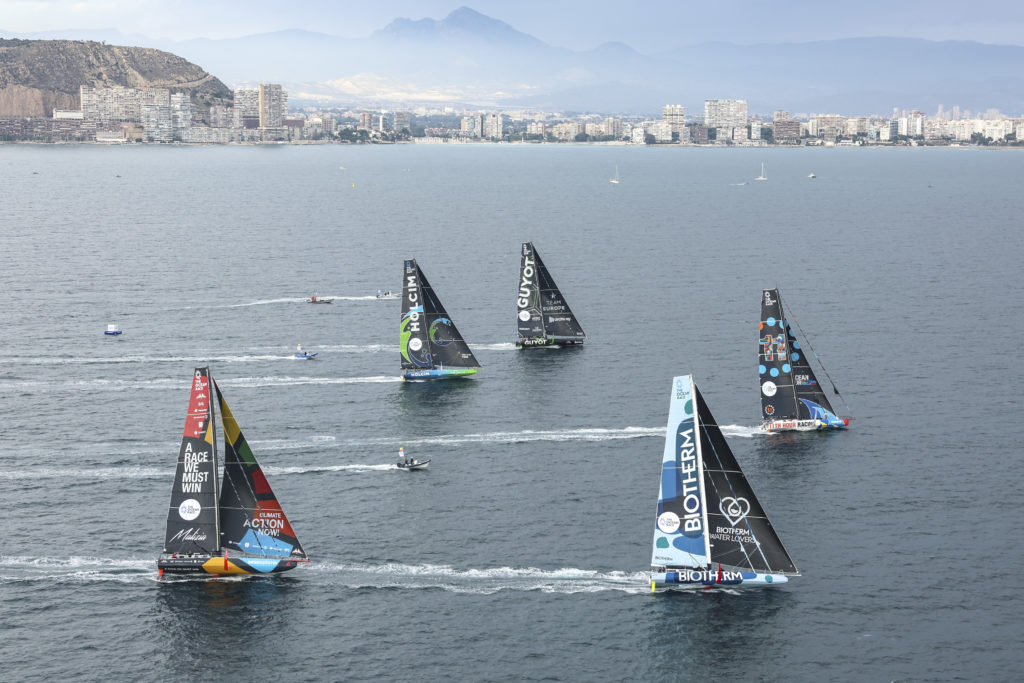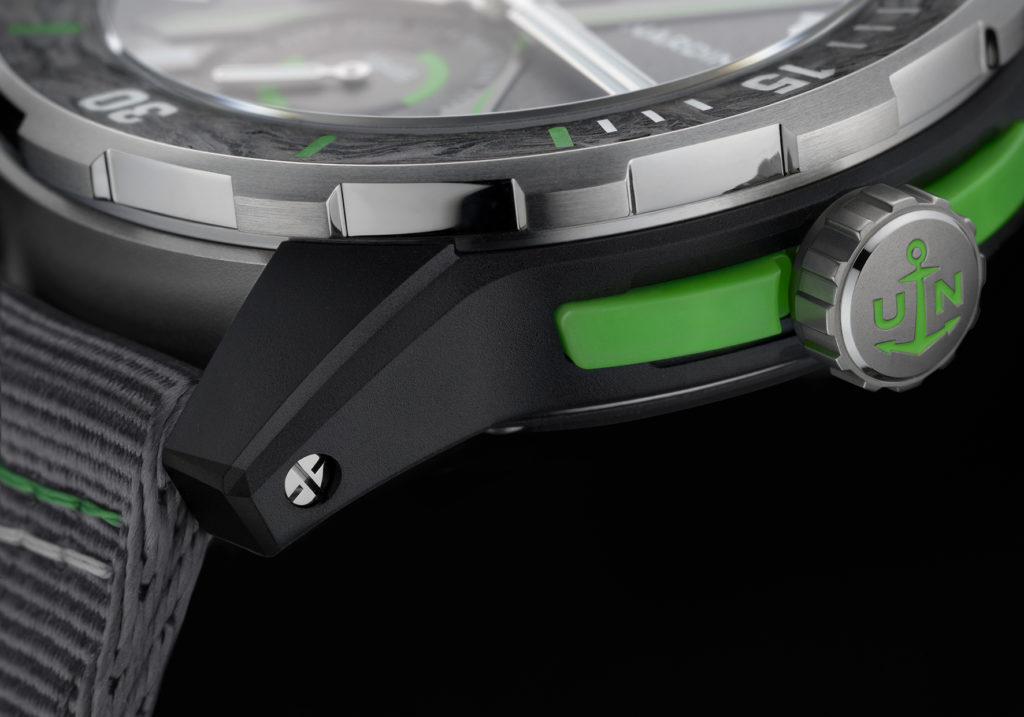Ulysse Nardin: first with the America’s Cup alongside Artemis, the Swedish challenge. Then came the Vendée Globe, the non-stop solo round-the-world sailing race. As if that were not enough, this year the Vendée Arctique was also added. Above all, of course, there is the Ocean Race. Not bad at all. Ulysse Nardin’s hands run faster and faster on the sea. It is difficult to find a watch manufacturer engaged in the front line on so many sailing fronts. If previously it was the buoys of the race course where the America’s Cup was raced that defined the perimeter, today the horizons of the Le Locle-based company no longer have any boundaries and embrace the ocean expanses. (Here all our posts about Ulysse Nardin)

A change of pace that speaks volumes about Ulysse Nardin’s vision. It couldn’t be otherwise for a company in which the sea has always represented an extraordinary source of inspiration to give life to collections that have become cult objects for watchmaking enthusiasts. Now the challenge becomes even more exciting and fascinating. At stake is not only performance, whether it is a regatta or a new timepiece. The real mission is to protect the environment, especially the marine environment.
The Ocean Race
This is the strongest message that will accompany the return of the Ocean Race, the legendary round-the-world sailing race in stages for which Ulysse Nardin is official timekeeper. But in addition to the purely sporting aspect, the 2023 edition brings with it many other key elements. Starting with an important anniversary: the 50th anniversary of a regatta that has entered the Olympus of sailing competitions.

The first edition known as Whitbread Round The World Race started on 8 September 1973 from Portsmouth in England. Half a century later this regatta has become the Volvo Ocean Race and now The Ocean Race has seen all the legends of sailing pass through its ranks: from Eric Tabarly to Sir Peter Blake, from Pierre Fehlmann to Dennis Conner, from Grant Dalton to Paul Cayard up to the present day with champions of the calibre of Franck Cammas, Charles Caudrelier and Ian Walker.

The one that started from Alicante on Sunday 15 January is an edition renewed in content and format. At the stroke of the cannon, the five hulls, all of the Imoca 60 class, are called upon to cover the 60,000 km course, spread over 7 legs and a total of 9 locations involved, which includes the passages of the fearsome Cape of Good Hope and Cape Horn. Added to these are the 6 VO65s that will be competing in the Sprint Race Cup races that will be run along the Alicante-Cape Verde; Aarhus-The Hague and The Hague-Genoa routes.

Ulysse Nardin and the sea: an unbreakable bond
Marking the time of The Ocean Race is Ulysse Nardin. The Le Locle-based company’s presence in the sailing world is not breaking news. On the contrary, Ulysse Nardin boasts a respectable CV: he took part in the America’s Cup. Then he marked time at the Vendée Globe, the non-stop solo round-the-world race, and now he is preparing to write a new story alongside The Ocean Race. Yes, but what values do these three events have in common? “This regatta,” comments Patrick Pruniaux, CEO Ulysse Nardin, “is the meeting point between the Vendée Globe and the America’s Cup. This competition expresses the value of teamwork, just as in the America’s Cup, to which we add the theme of performance that unites it with solo round-the-world sailing. It was extraordinary to see at the last Vendée Globe to see the boats arrive after almost 80 days of interrupted sailing around the world only a few hours apart. The Ocean Race, and herein lies the difference, will be an incredible tool to communicate, in the different stages where the race will stop, the values of sailing and, more importantly, those related to environmental issues”.

Environment first: a challenge to be met
Never before has the issue of environmental protection become an absolute priority. We have seen it first hand, or rather experienced it on our skin with the year that has just ended, which has gone down in history as the hottest ever, that is since man began measuring temperatures.

The skippers and managers, on behalf of each of the 11 teams participating in the 50th edition of The Ocean Race, signed the Race Teams’ Charter of Sustainability. In addition, the crews pledge to be spokespeople for the oceans, raising awareness among their sponsors, partners and fans to help protect the seas. They also recognise the ocean’s right to thrive and support the regatta’s One Blue Voice campaign, which calls for a Universal Declaration of Ocean Rights. Each boat will board scientific equipment to collect vital data on the oceans, helping scientists better understand the seas and the impact of human activities on them, contributing to the United Nations Decade of Ocean Science. And as if that were not enough, teams must have renewable energy on board, avoid any single-use plastic and minimise, measure and balance unavoidable greenhouse gas emissions.

An area where Ulysse Nardin is also making its voice heard. In what way? First and foremost by acting as Time to Act Partner of The Ocean Race which, for the duration of the event, will promote a whole series of initiatives on environmental issues (forums, conferences, awareness-raising projects on ocean protection issues involving young people). That’s not all. Ulysse Nardin will be alongside the 11th Hour Racing Team present with an Imoca 60 at the regatta and whose objective is to bring attention to the theme of sustainability. “11th Hour Racing Team is the ideal partner for our brand. Like us, they are also explorers. We strive to innovate through the use of new materials that reduce the impact on the environment, and 11th Hour Racing Team employs cutting-edge technology, proving that sustainability can win the race,” added Pruniaux.
Ulysse Nardin Diver The Ocean Race: the hour of sustainability begins
“We have great ambitions. We want to be one of the driving forces behind this change, which does not only affect the watch industry but all production activities in a broader sense. Today, customers have developed a greater awareness of the environmental issue and it has become a factor that is increasingly taken into account in purchasing processes. There is also an ethical and transparent approach that the Maison has always had and continues to maintain,” says Pruniaux, who adds:

“Every year we produce no more than 15,000 pieces, a smaller quantity than in other companies, but with a very high craftsmanship component. In this way we can afford direct control of all production processes including water and energy consumption aspects. At the same time, this condition gives us an advantage in terms of operational flexibility and thus allows us to explore new solutions such as the one that led us, with the fundamental contribution of a start-up Fil&Lab, to conceive the Diver The Ocean Race, a watch made largely with material from recycled fishing nets”.

A philosophy that has made it possible to conceive a timepiece 95% of whose components come from within a 30 km radius of the Manufacture, half of which are derived from channels dedicated to recycling materials. Other elements that make this model unique include the bezel decorated with Carbonium®, composed of the same fibres used in the latest generation of aircraft and whose environmental impact is 40% less than other carbon composites. In addition, the sides of the case and the back of the 44 mm watch use an innovative combination of materials: 40% Carbonium® and 60% polyamide recycled from fishing nets, Nylo®, thanks to the work of FIL&LAB, a start-up of young Breton designers who created the first fishing net recycling company in France. The strap, with its hook-and-loop fastener, is also entirely recycled from fishing nets.

There will be many who wonder whether the term ‘recycled’ can be combined with a product, in this case a timepiece, of high range. Will it continue to be the exception or will it become the new rule? Here, too, Pruniaux has clear ideas: ‘It’s a bit like Formula One or the America’s Cup. As well as being top-level competitions, they are real platforms for experimenting with new technologies and materials, the same ones that are then applied in the automotive industry and sailing.

The same applies to the Diver The Ocean Race. The work done in terms of research, development and materials is just the starting point of a path that will allow us to replicate those same solutions not just on a limited edition but on a large scale. This is only the beginning”.
Matteo Zaccagnino





